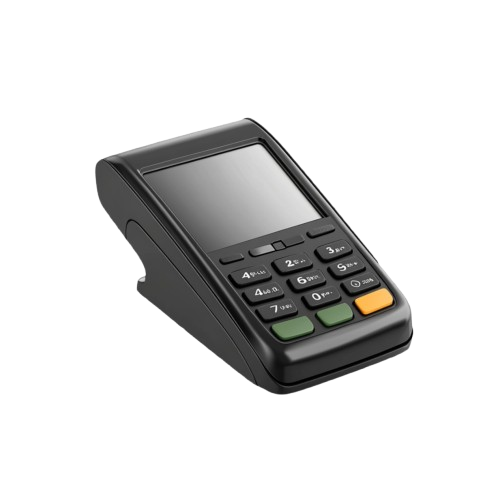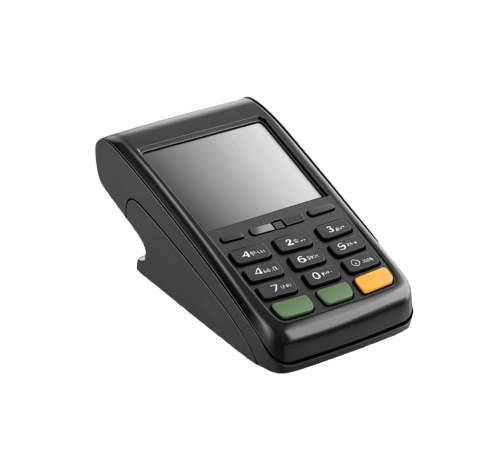Chip and PIN Machines : The Unsung Heroes of Secure Transactions (A Comprehensive Guide for Businesses)
In today’s digital-first world, the humble Chip and PIN machine often fades into the background, a silent workhorse facilitating countless transactions every single day. Yet, this seemingly simple device is a cornerstone of modern commerce, playing a critical role in ensuring secure and reliable payments for businesses of all sizes. Understanding the intricacies of a Chip and PIN machine is not just beneficial – it’s essential for any entrepreneur looking to thrive in a landscape where card payments reign supreme.
This comprehensive guide delves deep into the world of Chip and PIN machines, briefly defining their core function before exploring their evolution, benefits, how they work, key considerations for businesses, and their enduring relevance in an increasingly contactless world.
Briefly Defining the Chip and PIN Machine: Your Secure Payment Gateway
At its core, a Chip and PIN machine is a type of payment terminal designed to accept card-based payments securely. It reads the microchip embedded in debit and credit cards (the “chip”) and requires the cardholder to enter their Personal Identification Number (PIN) to authorize the transaction. This two-factor authentication process significantly enhances security compared to older magnetic stripe-only systems.
The Evolution of Payment Security: From Magnetic Stripes to Smart Chips
The introduction of Chip and PIN technology, also known as EMV (Europay, Mastercard, and Visa), marked a significant leap forward in payment security. Before its widespread adoption, magnetic stripe cards were the norm. These stripes stored cardholder data that was relatively easy to copy, leading to a surge in card fraud.
The development of the microchip offered a more robust solution. The chip contains dynamic data that changes with each transaction, making it incredibly difficult for fraudsters to clone cards. Coupled with the PIN, which acts as a personal verification, Chip and PIN machines created a powerful barrier against unauthorized use. The rollout of EMV standards across the UK and Europe in the early 2000s dramatically reduced card-present fraud, establishing the Chip and PIN machine as a vital tool for protecting both businesses and consumers.
Why Every UK Business Needs a Reliable Chip and PIN Machine: Unpacking the Benefits
Investing in a modern and reliable Chip and PIN machine offers a multitude of advantages for businesses operating in the UK:
- Enhanced Security and Fraud Reduction: This is the primary benefit. By verifying the card’s authenticity through the chip and confirming the cardholder’s identity via the PIN, Chip and PIN machines significantly minimize the risk of fraudulent transactions and associated chargebacks. This protects your revenue and reputation.
- Increased Customer Trust and Confidence: Customers are increasingly aware of payment security. Offering Chip and PIN as a payment option assures them that their transactions are being handled with the latest security protocols, fostering trust and encouraging repeat business.
- Compliance with Payment Industry Standards: Major card networks like Visa and Mastercard mandate the use of EMV-compliant terminals. Using a Chip and PIN machine ensures your business adheres to these industry standards, potentially avoiding penalties and maintaining your ability to accept card payments.
- Versatility in Accepting Card Payments: Modern Chip and PIN machines often support a wide range of payment methods beyond just chip and PIN. This can include contactless payments (NFC), magnetic stripe (for older cards), and sometimes even mobile payment options like Apple Pay and Google Pay. Offering diverse payment options caters to a broader customer base.
- Streamlined Transaction Process: While the chip reading and PIN entry add a few seconds compared to a simple swipe, the overall process is still quick and efficient. Modern Chip and PIN machines are designed for speed and ease of use, minimizing queue times and improving customer flow.
- Accurate Record Keeping: Transactions processed through a Chip and PIN machine are automatically recorded, simplifying bookkeeping and reconciliation. This reduces the risk of manual errors and provides a clear audit trail.
- Professional Image: Using a modern and well-maintained Chip and PIN machine projects a professional image for your business, signaling to customers that you are invested in providing a secure and reliable service.
- Adaptability to Future Payment Technologies: Many current Chip and PIN machines are built with the capacity to adapt to future payment innovations, ensuring your business remains equipped for evolving consumer preferences.
Decoding the Process: How a Chip and PIN Machine Works Its Magic
Understanding the technical process behind a Chip and PIN transaction highlights the security measures in place:
- Card Insertion: The customer inserts their chip card into the designated slot on the Chip and PIN machine.
- Chip Reading: The machine’s internal reader makes contact with the microchip on the card.
- Data Exchange: A secure communication channel is established between the chip and the terminal. The chip contains encrypted information about the cardholder’s account.
- PIN Entry: The customer is prompted to enter their PIN using the keypad on the Chip and PIN machine. The entered PIN is encrypted within the terminal.
- PIN Verification: The encrypted PIN is securely transmitted to the card issuer or payment processor for verification against the PIN stored on the chip. This verification happens offline in many cases, adding an extra layer of security.
- Authorization Request: If the PIN is correct and the card has sufficient funds (for debit cards) or available credit, the Chip and PIN machine sends an authorization request to the payment processor. This request includes the transaction amount and encrypted card details.
- Authorization Response: The payment processor communicates with the card issuer, who approves or declines the transaction. This response is sent back to the Chip and PIN machine.
- Transaction Completion: The Chip and PIN machine displays the transaction status (approved or declined) and prints a receipt for the customer and the merchant.
Choosing the Right Chip and PIN Machine for Your Business: Key Considerations
Selecting the ideal Chip and PIN machine requires careful consideration of your business needs:
- Business Type and Size: A small market stall might only need a basic mobile terminal, while a large retail store will require robust countertop or integrated systems.
- Mobility Requirements: Do you need a portable machine for on-the-go payments (e.g., deliveries, events)? Consider mobile or wireless Chip and PIN machines.
- Countertop Space: If counter space is limited, a compact Chip and PIN machine is essential.
- Connectivity: Consider your internet connectivity options (Wi-Fi, Bluetooth, GPRS) and choose a machine that suits your setup.
- Transaction Volume: Businesses with high transaction volumes need reliable machines that can handle frequent use without slowing down.
- Integration Capabilities: If you use a POS system, consider a Chip and PIN machine that can integrate seamlessly for streamlined operations.
- Fees and Contracts: Understand the merchant service provider’s fees (transaction fees, monthly fees, etc.) and contract terms before committing.
- Customer Support: Ensure the provider offers reliable customer support in case of technical issues.
- Additional Features: Consider features like contactless payment acceptance, tipping functionality, and the ability to process different currencies if relevant to your business.
The Enduring Relevance of Chip and PIN in a Contactless World
While contactless payments have seen a significant surge in popularity due to their speed and convenience, Chip and PIN machines remain a crucial component of the payment ecosystem. There are several reasons for this:
- Higher Transaction Limits: Contactless payments often have transaction limits, making Chip and PIN necessary for larger purchases.
- Cardholder Preference: Some customers still prefer the security of physically inserting their card and entering their PIN.
- Fallback Option: Chip and PIN serves as a vital fallback option when contactless payments are not possible due to technical issues or card limitations.
- Security for High-Value Transactions: For higher-value items, the added security of PIN verification provides greater peace of mind for both the merchant and the customer.
Conclusion: Embracing Secure Transactions with the Reliable Chip and PIN Machine
The Chip and PIN machine is more than just a payment device; it’s a symbol of secure and trustworthy commerce. By understanding its evolution, benefits, and how it works, businesses can appreciate its vital role in facilitating seamless and protected transactions. Choosing the right Chip and PIN machine is a critical decision that impacts customer trust, operational efficiency, and compliance. While the payment landscape continues to evolve, the reliable Chip and PIN machine will undoubtedly remain a cornerstone of secure card payments for the foreseeable future, empowering businesses to thrive in the modern marketplace. Investing in a quality Chip and PIN solution is not just a cost – it’s an investment in the security and success of your business. Visit Dojo Payments






